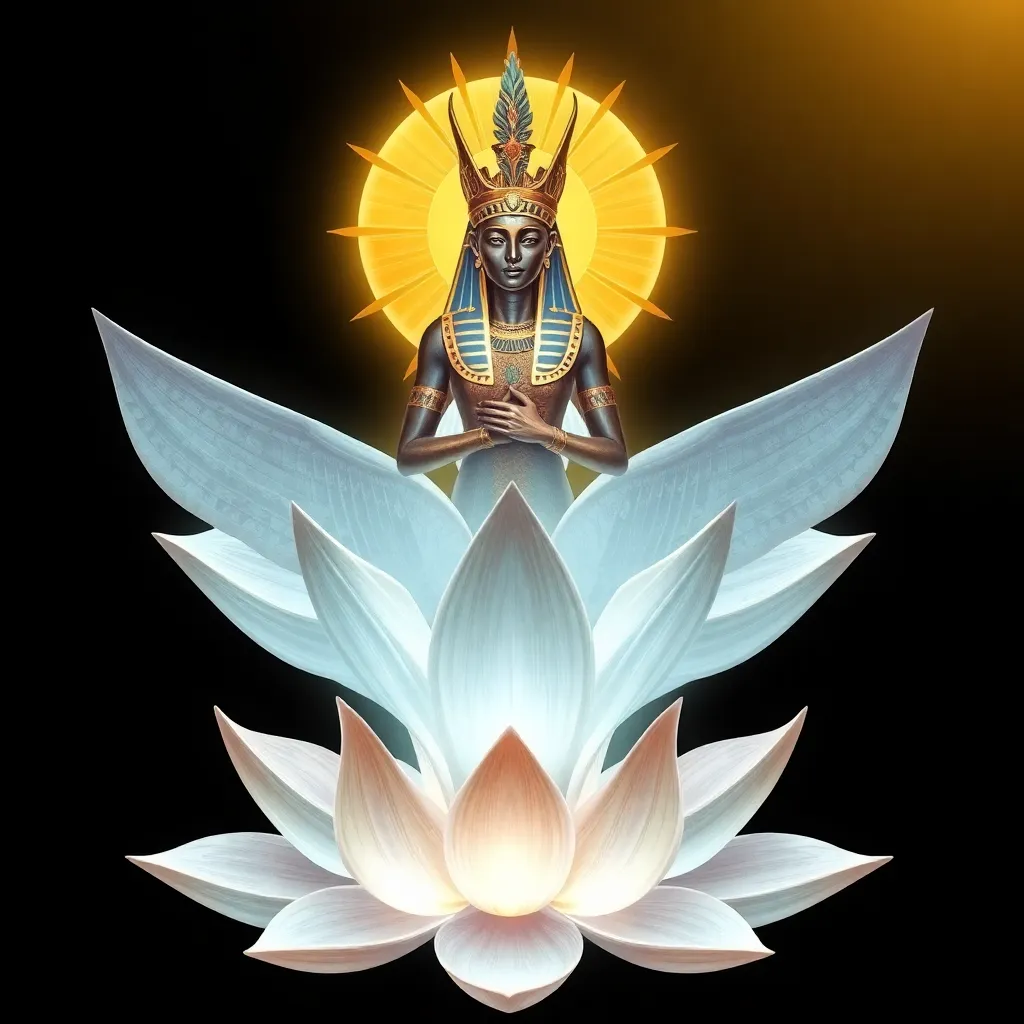The Significance of the Sacred Lotus in Egyptian Art
I. Introduction
The sacred lotus, known as *Nymphaea caerulea*, holds a prominent place in Egyptian culture. Its beauty and unique life cycle, where it blooms in the sunlight and retreats at night, have made it a powerful symbol throughout ancient Egyptian art and religion. The lotus flower is revered not only for its aesthetic qualities but also for its deep spiritual meanings, which resonate through the centuries in various forms of artistic expression.
II. Historical Context of the Sacred Lotus in Ancient Egypt
A. Origins and cultivation of the sacred lotus
The sacred lotus is native to the Nile River’s wetlands and has been cultivated by Egyptians for millennia. Its growth in shallow waters made it accessible and significant to the daily life of ancient Egyptians, who used it for food, medicine, and decorative purposes.
B. Role in ancient Egyptian religion and mythology
In ancient Egyptian religion, the lotus flower played a central role in mythology. According to some creation myths, the universe began with a lotus flower emerging from the primordial waters, symbolizing creation and the beginning of life. The flower’s association with the sun due to its diurnal behavior further linked it to the divine.
III. Symbolism of the Sacred Lotus
A. Representations of rebirth and creation
The lotus is a potent symbol of rebirth, often linked to the cycle of life, death, and resurrection. This symbolism is reflected in funerary practices and the belief in an afterlife, where the lotus serves as a bridge between the earthly realm and the divine.
B. Associations with deities, particularly Nefertem and Isis
The lotus is associated with several deities in Egyptian mythology:
- Nefertem: The god of perfume and healing, often depicted with a lotus on his head.
- Isis: The goddess of motherhood and magic, who is sometimes shown with lotus flowers, symbolizing fertility and rebirth.
IV. The Sacred Lotus in Egyptian Art
A. Depictions in sculpture and reliefs
The lotus is frequently depicted in Egyptian sculpture and reliefs, showcasing its importance in religious and cultural iconography. Artists often carved lotus motifs into temple walls, representing the connection between the physical and spiritual worlds. The flower is commonly shown in scenes of creation and rebirth, emphasizing its significance in the afterlife.
B. Use in pottery and decorative arts
In addition to sculptures, the sacred lotus appears in pottery and various decorative arts. Artisans created intricate designs featuring the lotus, which adorned everyday items and ceremonial objects. The beauty of the lotus motif contributed to the aesthetic value of these artifacts, making them cherished items in both daily life and religious practices.
V. Iconography and Motifs
A. Common motifs featuring the lotus
The lotus flower is a recurring motif in Egyptian art, appearing in various forms:
- Lotus Buds: Often used to symbolize new beginnings and potential.
- Open Lotus Flowers: Representing fullness and enlightenment.
- Lotus Leaves: Frequently depicted in scenes of daily life and nature.
B. Evolution of lotus imagery throughout different dynasties
Throughout different dynasties, the representation of the lotus evolved, reflecting changes in artistic styles and cultural significance. The Middle Kingdom saw a more naturalistic portrayal of the lotus, while the New Kingdom emphasized its symbolic aspects, integrating it into the grand narratives of gods and pharaohs.
VI. The Lotus in Funerary Art and Rituals
A. Significance in burial practices and tomb decorations
The lotus flower played a crucial role in funerary art, where it was frequently depicted in tomb paintings and decorations. These images were intended to ensure a safe passage to the afterlife and to symbolize rebirth and renewal for the deceased.
B. The lotus as a symbol of the afterlife
In funerary contexts, the lotus was often associated with the concept of the afterlife. Its ability to rise anew each day paralleled the beliefs surrounding resurrection and eternal life, making it a vital symbol for those seeking immortality.
VII. Modern Interpretations and Legacy
A. Influence of the sacred lotus on contemporary art
The sacred lotus continues to inspire contemporary artists who draw upon its rich symbolism and aesthetic beauty. Modern interpretations can be seen in various art forms, from paintings to jewelry design, reflecting the enduring legacy of this ancient symbol.
B. Continued relevance in Egyptian cultural heritage
The lotus remains an integral part of Egypt’s cultural heritage. It is celebrated in various cultural expressions, including festivals, art exhibitions, and educational programs, ensuring that its significance is recognized and preserved for future generations.
VIII. Conclusion
In summary, the sacred lotus holds profound significance in Egyptian art and culture, symbolizing rebirth, creation, and divinity. Its representations in ancient and modern interpretations highlight the flower’s enduring impact on artistic expression and cultural identity. As a powerful symbol of life and renewal, the sacred lotus continues to resonate, reminding us of its vital role in the rich tapestry of Egyptian mythology and heritage.




